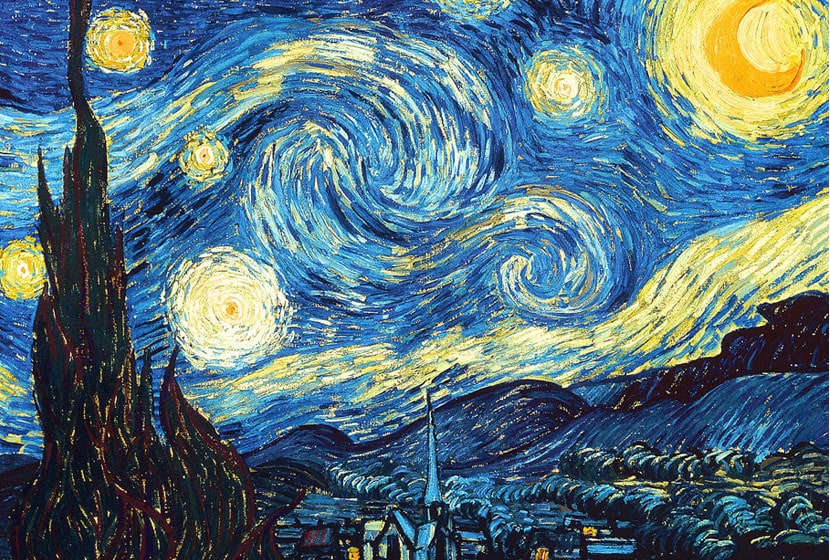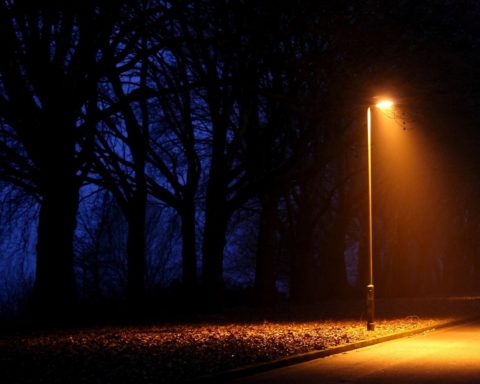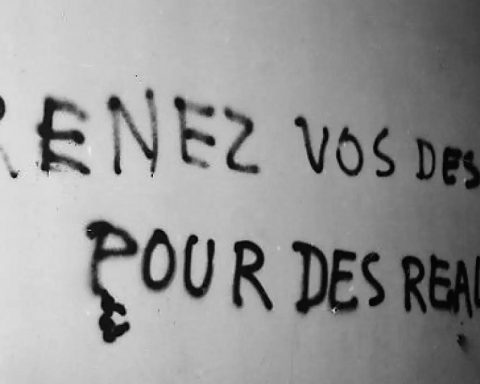L’accumulation de crises économiques viendrait nous dire quelque chose de notre imaginaire, si puissant pour déterminer nos actions, prévalant sur la rationalité de nos prises de décision. Reconnaître son influence c’est aussi détenir les clés de la relance, du renouveau, de la reprise, et comprendre qu’il est le moteur pour la mise en place d’un nouveau cycle de société.
La nature est un temple où de vivants piliers
Laissent parfois de confuses paroles ;
L’homme y passe à travers des forêts de symboles
Qui l’observent avec des regards familiers.
Charles Baudelaire
 Lorsque nous parlons de crise ou de reprise, si nous restons confinés dans le champ économique ou politique, nous perdons de vue d’autres éléments de la vie qui pourtant s’avèrent tout aussi déterminants.
Lorsque nous parlons de crise ou de reprise, si nous restons confinés dans le champ économique ou politique, nous perdons de vue d’autres éléments de la vie qui pourtant s’avèrent tout aussi déterminants.
Comme l’a très justement décortiqué dans son ouvrage « De la misère symbolique », Bernard Stiegler dénonce qu’au XXe siècle, le capitalisme consumériste a pris le contrôle du symbolique par son appropriation hégémonique de la technologie industrielle. L’esthétique y est devenue à la fois l’arme et le théâtre de la guerre économique. Il en résulte de nos jours une misère symbolique où le conditionnement se substitue à l’expérience, misère symbolique telle que l’ont engendrée les « sociétés de contrôle ». Il faut comprendre les tendances historiques qui ont conduit à la spécificité du temps présent, mais aussi de fourbir des armes et lutter contre un processus qui n’est rien de moins que la tentative visant à liquider la « valeur esprit », comme le disait Paul Valéry.
Symbole étymologiquement, vient du latin symbolus, signe de reconnaissance. Il provient du grec sumbolon et désignait un signe de reconnaissance, qui à l’origine était coupé en deux. Chaque personne conservait une partie, la remettait à ses enfants qui pouvaient, dans le temps, réunir les deux pièces pour faire la preuve des relations d’hospitalité qui avaient été contractées entre les deux hôtes à l’initiative de la démarche.
C’est au milieu du XVIe siècle qu’il prend la signification que nous lui connaissons aujourd’hui à savoir un objet ou un fait, qui évoque, par sa forme ou sa nature, une association d’idée avec quelque chose d’absent ou d’abstrait.
« Les symboles connaissent aujourd’hui une faveur nouvelle. L’imagination est réhabilitée, sœur jumelle de la raison, comme inspiratrice des découvertes et du progrès. Cette faveur est due en grande partie aux anticipations de la fiction que la science vérifie peu à peu, aux effets du règne actuel de l’image que les sociologues essaient de mesurer, aux interprétations des mythes anciens et à la naissance de mythes modernes, aux lucides explorations de la psychanalyse. Les symboles sont au centre, ils sont le cœur de cette vie imaginative. Ils révèlent les secrets de l’inconscient, conduisent aux ressorts les plus cachés de l’action, ouvrent l’esprit sur l’inconnu et l’infini. »
Un petit détour par l’An Mille
Pourquoi ne pas profiter d’une lecture illimitée de UP’ ? Abonnez-vous à partir de 1.90 € par semaine.
 Nous faisons un parallèle entre l’inertie économique majoritaire contemporaine et ce qui s’est produit au passage de l’An Mille durant le Moyen âge. En effet, si la terreur du passage de l’An Mille a largement était accentuée au XIXe siècle, comme nous le rappelle Georges Duby, à la suite des travaux historiques de Jules Michelet, revisités aujourd’hui pour rechercher un peu plus d’objectivité à ses analyses, il n’en reste pas moins qu’une observation de ralentissement économique patent a pu être consignée.
Nous faisons un parallèle entre l’inertie économique majoritaire contemporaine et ce qui s’est produit au passage de l’An Mille durant le Moyen âge. En effet, si la terreur du passage de l’An Mille a largement était accentuée au XIXe siècle, comme nous le rappelle Georges Duby, à la suite des travaux historiques de Jules Michelet, revisités aujourd’hui pour rechercher un peu plus d’objectivité à ses analyses, il n’en reste pas moins qu’une observation de ralentissement économique patent a pu être consignée.
L’inertie des abords de l’An Mille correspondait aux effets des peurs liées à ce passage décrit par l’Apocalypse de Saint-Jean. Les mille ans, annonçant le retour du Christ pour sauver l’humanité, cités par Saint-Jean étant alors pris comme une donnée calendaire et non pas symbolique, comme elle est depuis largement décrite. Si ce moment-là de l’histoire ne fut pas la terreur décrite par Jules Michelet, nombreux furent celles et ceux qui, en proie aux superstitions courantes à cette époque, attendirent le passage, dans la crainte, le repli et l’inertie.
Déjà, à l’époque, un message délivré par des abeilles : vers 1045, le moine et chroniqueur Raoul Glaber décrit les différents prodiges qui auraient suivi le millénaire de la Passion du Christ. Après 1033 se multiplient selon lui les signes et les événements surnaturels, qu’il interprète comme une façon pour Dieu de punir les hommes de l’énormité de leurs péchés et, surtout, de les inciter à la pénitence. Raoul Glaber insiste sur ces faits, après coup, car il veut montrer à quel point « les péchés de la terre retentissaient jusque dans les cieux ». Il lie d’ailleurs explicitement l’accumulation de toutes les calamités qu’il décrit au déchaînement de Satan prédit dans l’Apocalypse. Plusieurs chroniques du XVIe siècle reprennent son témoignage pour décrire de véritables scènes de panique dues à la croyance dans l’imminence de la fin des temps. Raoul Glaber évoque un certain Leutard, « qui peut être tenu pour un envoyé de Satan ». À la suite d’un message délivré par des abeilles, il a tout quitté et est allé par les routes tenir des discours qui « faisaient oublier la doctrine des maîtres ».
Depuis, la Renaissance et les Lumières ont permis de dépasser l’obscurantisme du haut Moyen âge, cette période faisant suite à la chute de l’Empire romain durant laquelle l’instruction régressa au point que seuls les moines dans les monastères conservaient l’usage de la lecture et de l’écriture et copiaient et recopiaient des ouvrages, principalement religieux, sans que la pensée ne soit revivifiée par l’apport de nouvelles connaissances ou de discussions provenant d’échanges avec d’autres communautés, religions et points de vue contradictoires.
Puis, l’An Mille étant passé sans que le monde s’écroule, la vie reprit ses droits avec une expansion économique, des échanges marchands ouvrant les frontières et une relance de la démographie. Petit à petit, le Moyen âge entra dans sa deuxième partie, lumineuse et éclairée, préfigurant la Renaissance.
Quelle correspondance contemporaine ?
 Et dans notre monde contemporain qu’observons-nous ?
Et dans notre monde contemporain qu’observons-nous ?
En 1999, lors de la tempête qui fit des ravages en France, d’aucuns y voyaient les signes de l’Apocalypse, on s’enthousiasmait pour la célèbre éclipse solaire totale et Paco Rabanne avait une forte audience avec ses prédictions. Et au 1er janvier, le monde était toujours là et le passage à l’an 2000 pour les ordinateurs s’était bien – même fort bien – déroulé sans aucune catastrophe marquante. Seule, la bulle Internet est venue nous rappeler que les excès de spéculations ne sont pas éternels et qu’il n’est pas possible d’étirer éternellement une spéculation de la réalité sans qu’il y ait un effet de rétroaction équivalent.
Avec le désenchantement du monde , décrit par Max Weber, propre à notre époque moderne, la science permettant de tout expliquer et d’évacuer toute interprétation animiste, religieuse ou magique sur les phénomènes du monde, le monde perdit sa poésie.
Peut-être aurions-nous pu nous en contenter si la fin du XXe siècle et le début du XXIe ne s’accompagnaient de crises à répétition laissant subodorer qu’il n’était sans doute plus question de crises économiques, qui par définition, sont courtes et passagères. Leur accumulation indique que nous sommes contemporains d’une mutation profonde de société à l’instar de la Renaissance des XVe et XVIe siècles.
Le besoin de réenchanter le monde
 Le retour de certaines superstitions est concomitant d’un besoin de réenchanter le monde. Face aux effets des crises : montée du chômage, de la pauvreté de toutes sortes de souffrances – notons d’ailleurs à ce moment l’apparition des termes de harcèlement, souffrance et de violence au travail – les individus ont besoin de rêver, de s’évader pour échapper à une réalité difficile dans laquelle économie et science n’ont pas apporté leurs promesses de bonheur pour tous. Alors c’est le retour de la magie que le cinéma hollywoodien a si bien su mettre en scène, du Seigneur des Anneaux, à Harry Potter ou The Hobbit ; les succès planétaires de ces sagas démontrent le besoin de nourrir l’imaginaire de nouvelles substances.
Le retour de certaines superstitions est concomitant d’un besoin de réenchanter le monde. Face aux effets des crises : montée du chômage, de la pauvreté de toutes sortes de souffrances – notons d’ailleurs à ce moment l’apparition des termes de harcèlement, souffrance et de violence au travail – les individus ont besoin de rêver, de s’évader pour échapper à une réalité difficile dans laquelle économie et science n’ont pas apporté leurs promesses de bonheur pour tous. Alors c’est le retour de la magie que le cinéma hollywoodien a si bien su mettre en scène, du Seigneur des Anneaux, à Harry Potter ou The Hobbit ; les succès planétaires de ces sagas démontrent le besoin de nourrir l’imaginaire de nouvelles substances.
Observons que ces films faisant appel à la magie ont majoritairement comme décor celui du Haut Moyen âge, comme s’il nous fallait fouler l’humus de nos ombres sociétales pour faire resurgir de nouvelles lumières.
Plus proche de nous, à la suite des crises de 2008 et 2011 – il devient délicat de les dater, tant la majorité des citoyens vit la continuité des difficultés – il y a eu l’engouement pour la fin du monde et le célèbre 21 décembre 2012, que stratégiquement, au fur et à mesure de l’approche de la date, chacun a intelligemment rebaptisé la fin d’un monde. Et ceci même si ce fut à juste titre.
Voici précisément une confusion qui nous conduit au cœur de notre argumentation.
Evoquer la fin du monde c’était participer à l’égrégore apocalyptique, mentionner la fin d’un monde c’est mettre en lumière la mutation profonde de notre société. Et bien entendu, une telle récurrence d’imaginaire apocalyptique vient nous renseigner sur le besoin de détruire l’ancien monde pour reconstruire le nouveau, lever le voile des catastrophes pour révéler la lumière des futurs à co-constuire.
Pour lutter contre la désinformation et privilégier les analyses qui décryptent l’actualité, rejoignez le cercle des lecteurs abonnés de UP’
La part déterminante de l’imaginaire
 En faisant le parallèle avec le Moyen-âge, nous avons voulu montrer la part déterminante de l’imaginaire, des représentations sur la réalité elle-même. Rien objectivement ne différait avant l’An Mille des quelques jours qui ont suivi le 1er janvier ; mais la représentation que s’en faisaient certains induisaient peurs et replis. De la même manière aujourd’hui, ce regain de superstitions pour expliquer des situations objectivement inexplicables – qu’une minorité s’enrichisse en appauvrissant délibérément une partie toujours plus importante de la population de la planète sans qu’il y ait de révolutions majeures peu paraître parfois incompréhensible – conduit à laisser la part belle à l’imaginaire de l’Apocalypse prenant le pas sur la réalité. Ou tentant de l’expliquer.
En faisant le parallèle avec le Moyen-âge, nous avons voulu montrer la part déterminante de l’imaginaire, des représentations sur la réalité elle-même. Rien objectivement ne différait avant l’An Mille des quelques jours qui ont suivi le 1er janvier ; mais la représentation que s’en faisaient certains induisaient peurs et replis. De la même manière aujourd’hui, ce regain de superstitions pour expliquer des situations objectivement inexplicables – qu’une minorité s’enrichisse en appauvrissant délibérément une partie toujours plus importante de la population de la planète sans qu’il y ait de révolutions majeures peu paraître parfois incompréhensible – conduit à laisser la part belle à l’imaginaire de l’Apocalypse prenant le pas sur la réalité. Ou tentant de l’expliquer.
Ce qui conditionne alors comportements et réactions qualifiées d’irrationnelles et amplifie la crise plutôt qu’elle ne la diminue. Qu’il y ait des raisons objectives économiques, sociales, climatiques, environnementales (réduction des ressources et accroissement des pollutions) à ces crises nous ne le discutons pas, toutefois entretenir les peurs, abêtir les foules et les rendre dépendantes aux loisirs et à la consommation est une volonté délibérée pour empêcher toute modification du système.
Notre responsabilité réside alors dans l’orientation que nous donnons à nos pensées et le choix de l’imaginaire que nous nourrissons.
La puissance du symbole
 Ainsi, prendre toute la mesure de l’influence des symboles sur notre pensée permet-il de passer les étapes délicates en conscience. Ainsi, tourner la page de 2012, laisser de côté les superstitions de la prophétie Maya et des dérives New Age nous ont-elles amené tout tranquillement à 2013. Une année succédant l’autre. Cependant, combien parmi nous ont-ils pris la mesure symbolique de cette année-là ? Le nombre 13 véhiculant sa cohorte de superstitions, porteur de chance pour certains et « maléfique » pour d’autres. Combien se souviennent encore des racines de cette superstition ?
Ainsi, prendre toute la mesure de l’influence des symboles sur notre pensée permet-il de passer les étapes délicates en conscience. Ainsi, tourner la page de 2012, laisser de côté les superstitions de la prophétie Maya et des dérives New Age nous ont-elles amené tout tranquillement à 2013. Une année succédant l’autre. Cependant, combien parmi nous ont-ils pris la mesure symbolique de cette année-là ? Le nombre 13 véhiculant sa cohorte de superstitions, porteur de chance pour certains et « maléfique » pour d’autres. Combien se souviennent encore des racines de cette superstition ?
Rappelons-nous : dans l’Egypte ancienne, ce fut le jour béni pour les Hébreux suivant Moïse et fuyant l’esclavage, mais ce fut un jour maudit pour Pharaon qui vit ses troupes anéanties dans la mer rouge. 13 c’est aussi la symbolique de la Cène, les douze apôtres et le Christ, avec le rôle controversé de Judas, qualifié de traître par les évangiles canoniques et d’apôtre servant le désir du Christ pour les évangiles apocryphes . Ce nombre correspond aussi à l’arrestation des Templiers (13 octobre 1307) et encore à la symbolique de la carte de Tarot signifiant mort symbolique et renaissance et enfin pour la Kabale, le 13 grâce à la guématria, est la traduction numérique du mot Ahava qui signifie Amour.
Voici donc un nombre qui véhicule de nombreuses significations très contrastées, qui sont opératives dans nos imaginaires, consciemment ou non, et qui ressurgissent pour conditionner nos comportements à la moindre occasion. La Française des Jeux l’a bien compris et les compagnies aériennes et les hôtels également qui n’ont ni place, ni chambre 13.
Ainsi, après avoir largement glosé et relayé la fin du/d’un monde, qu’avions-nous pensé pour sa reconstruction ? Où avons-nous lu ou vu des reportages sur ce qu’il convenait de bâtir, avec tout autant de ferveur et de médiatisation ? Rien.
En revanche, 2013 fut une année que des milliers de personnes ont vécu comme particulièrement éprouvante, empreinte de remises en cause, de déconstructions, de pertes, de quêtes de sens et de la nécessité de reconstruire du neuf. Nous ne commenterons pas davantage le parallèle entre les faits et la puissance des symboles. A chacun sa lecture.
Concilier raison et symboles pour co-construire un futur responsable
Nous voulons juste mettre l’accent sur le fait que si nous pouvions, dans notre monde que nous décrivons comme cartésien, reconnaitre la puissance du symbolisme et son influence sur la pensée, alors nous verrions mieux les raisons pour lesquelles nous sommes englués par la peur et pris dans le gruau de l’inaction.
Nous mettrions alors toute notre énergie à modifier nos formes-pensées (égrégores) qui ont pour conséquence d’influer sur toutes les activités de l’être humain. Car connaître symboles et mythes permet d’en être moins prisonniers et de piloter avec plus de conscience et de discernement ce qui nous anime, consciemment ou inconsciemment. Ce qui permet d’avancer et d’innover dans nos démarches.
L’accord unanime des sociétés humaines sur l’importance du symbole
 Il est remarquable de constater que toutes civilisations confondues, y compris les traditions des peuples premiers, inclus pour l’occasion, privilégient le symbolisme notamment au travers de la mythologie. Cette dernière est la fondation de l’imaginaire d’une civilisation comme ce fut le cas de la Grèce antique. Le symbolisme a toujours été le pouvoir des plus puissants, prêtres, sorciers, rois et empereurs, sages. Puis ces connaissances ont été reléguées dans l’ésotérisme lorsque la science a pris le devant de la scène. Le symbolisme étant désormais l’apanage des sociétés secrètes, soit l’objet d’étude des anthropologues, ethnologues, théologiens et de quelques psychologues ou psychanalystes !
Il est remarquable de constater que toutes civilisations confondues, y compris les traditions des peuples premiers, inclus pour l’occasion, privilégient le symbolisme notamment au travers de la mythologie. Cette dernière est la fondation de l’imaginaire d’une civilisation comme ce fut le cas de la Grèce antique. Le symbolisme a toujours été le pouvoir des plus puissants, prêtres, sorciers, rois et empereurs, sages. Puis ces connaissances ont été reléguées dans l’ésotérisme lorsque la science a pris le devant de la scène. Le symbolisme étant désormais l’apanage des sociétés secrètes, soit l’objet d’étude des anthropologues, ethnologues, théologiens et de quelques psychologues ou psychanalystes !
Pourtant, pouvons-nous faire abstraction de la puissance des mythes grecs qui continuent d’alimenter nos imaginaires, que les sociétés de marketing et de publicité savent utiliser à l’envie ? Les archétypes ont la vie dure et cela se vend bien comme en témoigne une publicité de la marque de chocolatqs Ferrero Rocher. Mais l’impact de l’Olympe ne s’arrête pas là ; la mythologie grecque a largement nourri les théories freudiennes ou prêté plusieurs noms à des constellations astronomiques ou à des missions spatiales. Nous pouvons ainsi mesurer les multiples ancrages symboliques de nos disciplines scientifiques et de notre quotidien dont nous avons complètement oublié les racines historiques et mythologiques mais dont nous ne pouvons pas minimiser les effets.
Entamant bientôt 2020, nous pouvons donc volontairement décider d’orienter consciemment nos pensées vers un certain réenchantement du monde, valoriser et privilégier la Renaissance qui jaillit au travers de milliers d’initiatives citoyennes et reconnaître les innovations qui façonnent demain. Combiner avec discernement symbolisme et autres plans de la réalité pour une plus grande vitalité sociétale et économique.
L’arbre qui s’écroule fait plus de bruit que la forêt qui pousse.
Proverbe africain.
Illustration : Tableau de Van Gogh « La nuit étoilée » 1889 – New York Museum of Modern Art
![]()
– « Les fausses terreurs de l’an Mille » de Sylvain Gouguenheim – Ed. Picard 1999
– « Ré-enchanter l’industrie par l’innovation » de Christophe Midler, Rémi Maniak et Romain Beaume – Ed. Dunod 2012
– « Quoi de neuf Docteur ? Ou l’innovation comme volonté et représentation » de David Morin-Ullman – UP’ Magazine 2012
– « Réenchanter le monde: La valeur esprit contre le populisme industriel » de Bernard Stiegler – Ed. Flammarion – Déc. 2013
– « Le réenchantement du monde » de Michel Maffesoli – Ed. La Table ronde – 2010












